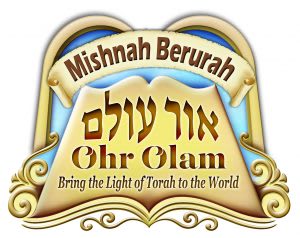Trapping or Killing Insects

Trapping animals, birds, fish or insects (Tzad) is one of the 39 forbidden Shabbos Labors (melachos). Trapping on Shabbos is forbidden min Hatorah when the trapper intends to benefit from what he trapped. (In the case of an animal, for example, he intends to eat it, to skin its hide, to sell it, to raise it as a pet, etc.). Another prerequisite for trapping to be forbidden min Hatorah is that the animal, etc. be of a species which is normally trapped in order to benefit the trapper in some way. Miderabanan, however, it is forbidden to trap any and all animals, birds, fish or insects, even those species which are normally not trapped to benefit the trapper. Thus it is forbidden miderabanan to trap a wasp, hornet, bee124 or any other insect that may be flying around in the sukkah.125
All methods of trapping are forbidden. One may not trap an animal, etc. with his hands or with a net. One may not invert a cup over an insect in order to trap it. It is forbidden miderabanan to lay a trap [or to put bait into it126] on Shabbos or Yom Tov,127 but it is permitted to lay a trap [or turn on an electric bug zapper] on erev Shabbos or Yom Tov even though the animal or insect will be trapped [or zapped] on Shabbos or Yom Tov.
Nevertheless, if an insect is about to sting128 someone, and merely shooing it away will leave him vulnerable, it is permitted to catch the insect and dispose of it or to trap it under an inverted cup, etc., despite the issur derabanan of Trapping.129 This dispensation is given by the Rabbis to prevent the insect form inflicting pain or sickness upon its intended victim.130 Some poskim go even further and permit trapping an insect which is causing great distress [or great fear] even if the insect is not liable to sting, e.g., the insect’s buzzing is interfering with one’s sleep.131 Other poskim do not agree with this leniency.132
Whereas trapping an insect on Shabbos is permitted under certain circumstances, killing an insect on Shabbos is forbidden.133 It is forbidden to spray pesticide directly on an insect,134 but it is permitted to spray into the air in order to chase the insect away.135
However, regarding insects that pose a threat to human life like a bee flying near a person who is allergic to bee bites or a disease-bearing mosquito, it is permitted to not only catch and dispose of the insect or to trap it, but, if necessary, to kill it. Even if the dangerous insect is flying around and not apparently poised to sting anyone, it may be caught, trapped or killed.136 A person should not remain in the sukkah if a dangerous or a particularly bothersome insect is therein, since a person in that situation is termed a mitztaer (in distress) and is exempt from the mitzvah of Sukkah.137
If ants invade the Sukkah, some poskim maintain it is permitted to trap them and dispose of them since the Shabbos prohibition of Trapping does not apply to slow-moving creatures which are easy to catch and grab, but only to free-roaming creatures that are “captured” against their will.138 Other poskim disagree and maintain that miderabanan, trapping applies to slow-moving creatures as well, since prior to the trapping the creature was free to move around and about, whereas after the creature is trapped it can no longer move around at all.139
A live mouse that gets into the Sukkah may not be caught with one hands (or with a net, etc.) on Shabbos, but a trap may be laid for mice before Shabbos. If a dead mouse is found in the sukkah, it may be picked up and disposed of.140
124. Although honey bees are used for honey, most poskim still consider them to be a species which is not normally trapped. A possible explanation is because bees must be able to fly in order to suck the nectar from flowering plants, thus they are allowed to fly and not normally trapped or captured; see Avnei Nezer, O.C. 189:21.
125. O.C. 316:3.
126. Rav N. Karelitz, quoted in Toras Hamelachos, Tzad, 17).
127. Mishnah Berurah 316:18.
128. “About to sting” is defined as when the insect is on an exposed part of one’s body (even if it is not actually in the process of biting) or if it is crawling on the inner surface of his clothing. If it is just flying around in the sukkah, or even if it is crawling on top of his clothing, it is not considered “about to sting”.
129. Although catching the insect with one‘s hands may entail a muktzeh violation since all animals or birds are muktzeh as explained in Chapter 305, in this case the insect may be considered “repulsive” and it is permitted to be moved based on the graf shel re’i exemption that was explained in Chapter 308; Ashrei ha-Ish 17:178.
130. Mishnah Berurah 316:37.
131. Rav N. Karelitz, quoted in Toras Hamelachos, Tzad, 104).
132. Rav S. Z. Auerbach (Shemiras Shabbos K’hilchasah 25, note 21).
133. Shulchan Aruch ha-Rav 316:18. There are some poskim who suggest that on Yom Tov, it is permitted to kill all bothersome insects since it is permitted to kill (slaughter) for food on Yom Tov and the mitoch principle allows you to kill for other purposes as well. This opinion is debated by the poskim on several grounds and it remains questionable; see Emes l’Yaakov, O.C. 518:1 (note 478), Minchas Shelomo 2:58-5 and Ashrei ha-Ish, Yom Tov 3:58.
134. Koveitz Teshuvos 1:36.
135. Shemiras Shabbos K’hilchasah 25:6; Orchos Shabbos 14:28.
136. Shemiras Shabbos K’hilchasah 25:1.
137. See O.C. 640:4.
138. Rav S. Z. Auerbach (Shemiras Shabbos K’hilchasah 27, note 154 and Shulchan Shelomo 316:4).
139. Orchos Shabbos 14, note 21, quoting Rav Y.S. Elyashiv.
140. Mishnah Berurah 108:130.
